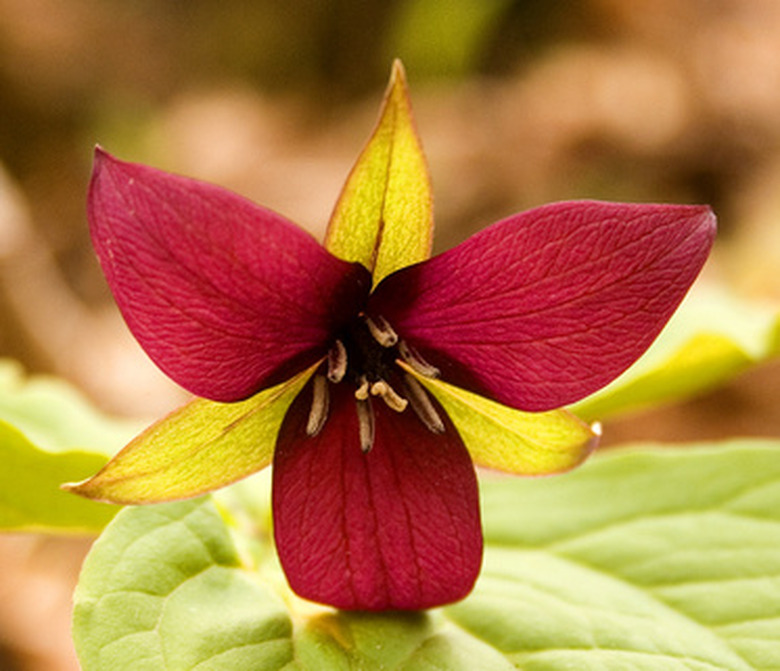Ohio Plant Identification
Ohio is blessed with a wide range of plants. The Our Ohio website recommends Ohioans using more native plants in their landscapes. Many of the state's plants can do well even under difficult conditions. They're able to thrive in dry or wet, shade or sun, low or high fertility and even clay-like or acidic soils. When Ohio's native plants are properly used, they can better adjust to local climatic conditions, need less upkeep and give four-season interest.
Plants and Flowers
Baptisia is a strong, attractive hybrid plant with blue and white flowers. This plant lives long and does well in well-drained, average soil, notes the Ohio University Extension website. The purple beautyberry is a round, graceful-looking woody plant that grows about 3 to 6 feet tall. Although this plant has small pink flowers, its lavender-pink fruit is more noticeable. The state wildflower, the trillium, is a common flower. Other popular wildflowers found growing in Ohio include wild geraniums, mayapples, bloodroots, squirrel corns and Solomon's seals. Asters and goldenrods are common spring wildflowers, says Our Ohio.
- Ohio is blessed with a wide range of plants.
- Many of the state's plants can do well even under difficult conditions.
Vegetable Plants and Trees
There are more than 40 varieties of vegetables that can grow in Ohio. Ohio State University Extension suggests using succession planting so garden space can be used more effectively. This involves replanting with a different crop immediately after one crop is harvested. Ohio has at least 14 oak species. Other common Ohio trees include poplar, ash, elm, hickory, beech, eastern black walnut, black locust, wild sycamore and wild black cherry varieties.
Geography
Ohio enjoys a four-season climate, which ensures the state has much rainfall throughout most of the year, notes the Touring Ohio website. The state receives roughly 39 inches of rainfall annually, which is somewhat more than even Seattle. Northwest Ohio has slightly less rain than Southwest Ohio. Most of the state falls within Hardiness Zones 5 and 6. Zone 5A has minimum winter temperatures as low as minus 10 to minus15 degrees F, while Zone 6B, the warmest region, has minimum temperatures of 0 to minus 5 degrees F.
- There are more than 40 varieties of vegetables that can grow in Ohio.
- The state receives roughly 39 inches of rainfall annually, which is somewhat more than even Seattle.
Misconception
Although easy-to-grow plants, such as Joe Pye weed, butterflyweed, milkweed and ironweed contain the word "weed" in their names, this shouldn't have a negative meaning. In fact, plants including milkweed and butterfly weed attract butterflies, notes Our Ohio. These plants just need to be planted in the correct soils to do well.
Warning
Planting non-native plants can result in them taking over and forcing out native plants. There are several non-native plants in Ohio that are known for invading the state's woodlands. Two of the most invasive plants include the Japanese honeysuckle and the Japanese knotweed, notes the Ohio Department of Natural Resources. Other invasive plants are the autumn olive, buckthorn, purple loosestrife, common reed, reed canary grass, garlic mustard, multiflora rose and bush honeysuckle.
- Although easy-to-grow plants, such as Joe Pye weed, butterflyweed, milkweed and ironweed contain the word "weed" in their names, this shouldn't have a negative meaning.
